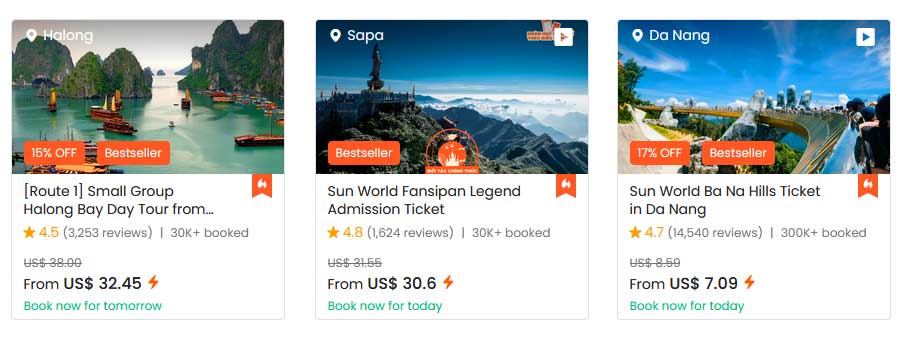
ℹ️ What You Can Expect
⚠️ Prepare for Trekking
🌲 Favorite Sites of Vietnam
📍 Maps – Reserves + Parks
❓ FAQ + Travel Tips + Info
Quick answer: Trekking in Vietnam is a highlight for nature lovers and adventure seekers, especially in the north where mountain landscapes, ethnic‑minority villages, and dramatic national parks await. Popular regions include Sapa, Ha Giang, and Pu Luong. There are trails for both day hikes and multi‑day treks, with options to stay in local homestays or eco‑lodges. Responsible trekking practices—like choosing local guides and respecting community and environment—make the experience richer and more sustainable.
At a glance:
- 🌄 Key regions: Sapa, Ha Giang, Pu Luong, Ba Be, and more offer diverse terrains from rice terraces to karst plateaus.
- 👣 Trek types: From easy day walks among rice fields to challenging multi‑day circuits with overnight homestays.
- 🏡 Accommodation: Stay in traditional ethnic‑minority village homes or eco‑lodges for an immersive experience.
- 🌍 Responsible trekking: Use local guides and small‑group operators to support communities and minimise environmental impact.
- 🛠️ Gear tips: Training, a sturdy backpack, good hiking shoes, and basic first aid are highly recommended.
Last updated November 2025
Mountains and National parks of northern Vietnam are suitable for trekking.
Beautiful sceneries – mountains, rivers, hills, caves, waterfalls, villages and ethnic minorities, nature. Almost everything you will see when you go into the some of favorite areas for trekking in northern Vietnam. Northern Vietnam has also 2 geoparks: Dong Van Karst Global Geopark and Non Nuoc Cao Bang Geopark written in UNESCO. Below this article you will find maps of the national parks in northern and southern Vietnam.
The area with the most beautiful treks is located near the Chinese border in the north (Sapa, Ha Giang, Cao Bang).
In northern Vietnam, you can trek almost everywhere where are a mountains. When you want to go on the difficult trails, it is recommended to hire a local guide.
The Best weather for trekking is in the months from October to March (dry season).
However, be aware that the weather can change rapidly in these months anywhere (hot, rain, sometimes the snow in the mountains).

How to Prepare Before I Go Trekking in Vietnam?
Preparing for a trekking trip in Vietnam requires careful planning and consideration of several factors. Here are some important steps to help you prepare for trekking in Vietnam:
1. Research your destination:
Start by researching the specific trekking destination(s) you plan to visit in Vietnam. Understand the difficulty level, terrain, weather conditions, and any permits or restrictions that may apply. Consider popular trekking spots like Sapa, Ha Giang, or Pu Luong.
2. Plan your itinerary:
Determine the duration of your trek and create a detailed itinerary. Identify the starting and ending points, the trails you’ll be following, and the campsites or accommodations along the way. Be realistic about your physical fitness level and choose a trek that matches your abilities.
3. Pack the essentials:
Make a checklist of the essential items you’ll need during the trek. This typically includes a sturdy backpack, comfortable hiking boots, appropriate clothing (layered for varying weather conditions), a rain jacket, a hat, sunglasses, sunscreen, a first aid kit, a headlamp or flashlight, a water bottle, and a sleeping bag if necessary. Don’t forget to pack snacks and sufficient food supplies for the trek.
4. Get necessary vaccinations:
Check with your healthcare provider or a travel clinic to ensure that you’re up to date on routine vaccinations and inquire about any additional vaccines required for Vietnam. Consider getting vaccines for diseases such as typhoid, hepatitis A and B, and tetanus.
5. Stay physically fit:
Trekking can be physically demanding, so it’s essential to prepare your body beforehand. Engage in regular exercise such as hiking, jogging, or cycling to build stamina and strengthen your leg muscles. Additionally, practice carrying a loaded backpack to get accustomed to the weight.
6. Acclimatization:
If you’re trekking in high-altitude areas, allow time for acclimatization to prevent altitude sickness. Ascend gradually, take rest days, and stay hydrated. Be familiar with the symptoms of altitude sickness and know how to respond if you or your companions experience them.
7. Learn basic Vietnamese phrases:
While not essential, learning a few basic Vietnamese phrases can enhance your experience and help you communicate with locals. Phrases like greetings, asking for directions, and simple pleasantries can go a long way.
8. Obtain necessary permits:
Some trekking areas in Vietnam require permits, especially if you’re visiting national parks or protected areas. Check the local regulations and obtain the necessary permits well in advance of your trek.
9. Arrange transportation and accommodation:
If you’re not joining a guided tour, make arrangements for transportation to the trekking starting point and from the endpoint back to your accommodation. Book your accommodations in advance, especially during peak seasons.
10. Inform others about your plans:
Let a trusted friend or family member know about your trekking plans, including your itinerary and expected return date. Provide them with emergency contact details and keep them updated about any changes to your plans.
Remember to respect the local environment, adhere to local customs, and follow responsible trekking practices to minimize your impact on nature and ensure an enjoyable and safe experience in Vietnam.
BOOK A PRIVATE TOUR in Vietnam ➜
What to take on treks into the mountains and parks in Vietnam?
When trekking into the mountains and parks in Vietnam, it’s important to pack the right gear and essentials to ensure your comfort, safety, and enjoyment. Here’s a list of items to take on a trekking trip in Vietnam:
| What to take on treks in Vietnam: | |
|---|---|
| Backpack | A sturdy and comfortable backpack to carry all your belongings. |
| Hiking boots | Waterproof and durable hiking boots with good ankle support. |
| Clothing | Lightweight, moisture-wicking, and quick-drying clothing suitable for layering, including long-sleeved shirts, T-shirts, pants, shorts, and thermal layers for colder regions. |
| Rain jacket | A waterproof and breathable rain jacket or poncho to protect you from unexpected rain showers. |
| Hat and sunglasses | A wide-brimmed hat or cap to shield you from the sun, and sunglasses to protect your eyes. |
| Sunscreen | A high SPF sunscreen to protect your skin from harmful UV rays. |
| Insect repellent | An effective insect repellent to ward off mosquitoes and other insects. |
| First aid kit | A basic first aid kit containing adhesive bandages, antiseptic ointment, pain relievers, blister pads, and any necessary personal medications. |
| Headlamp / Flashlight | A headlamp or flashlight with extra batteries for navigating in low-light conditions or during nighttime. |
| Water bottle | A reusable water bottle to stay hydrated throughout the trek. Consider using a water filter or purifier if necessary. |
| Snacks and food | Carry lightweight and high-energy snacks such as trail mix, energy bars, and dried fruits. Additionally, pack sufficient food supplies for longer treks or remote areas. |
| Cooking equipment (if needed) | If you plan on cooking your meals, carry a lightweight camping stove, cookware, and utensils. |
| Sleeping bag and sleeping pad | A lightweight and compact sleeping bag suitable for the expected temperature range, and a sleeping pad for added comfort during overnight stays. |
| Navigation tools | A map, compass, or GPS device to help you navigate through the trails. |
| Trekking poles | Optional but helpful for stability and reducing stress on your knees, especially during challenging terrain or steep descents. |
| Personal hygiene items | Include items such as toilet paper, wet wipes, hand sanitizer, and a small towel. |
| Cash and identification | Carry some cash in small denominations for emergencies, along with identification documents. |
| Portable charger | A portable charger or power bank to keep your electronic devices charged. |
| Camera or smartphone | Capture your trekking memories with a camera or smartphone. |
| Trash bags | Help keep the trails clean by carrying and properly disposing of your trash. |
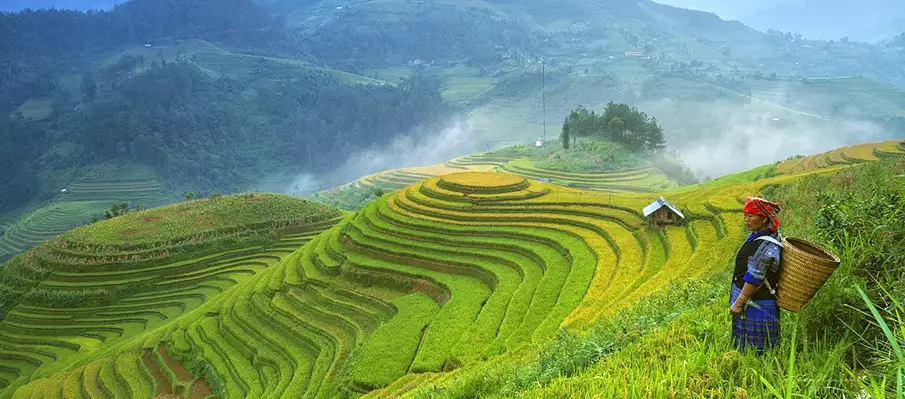
Favorite and suitable areas for trekking
and national parks in northern Vietnam:
1. Sapa
-
- is one of the most beautiful places for trekking, you can explore the ethnic minorities and villages
- good climate and weather, rapid fluctuations of weather, 1600 meters above sea level
- starting point for trekking to the highest mountain in Vietnam – Phansipan (3143 m)
- five different ethnic groups live here: Hmong, Red Dao, Xa Pho, Tay and Giay
- Muong Hoa valley and Hoang Lieng Son mountains with ethnic villages and beautiful rice terraces
- suitable place for trekking (one day to several days)
- homestay accommodation with local residents
- between the Sapa and Lai Chau town – breathtaking pass – Tram Ton Pass (1900 m)
How to travel from Hanoi to Sapa? ➜
Book your hotel / homestay in Sapa ➜

-
- I recommend to take a local guide from the Hmong or Red Dao ethnic minority
- you must purchase a ticket into the some places (eg. Cat Cat, Tavan, Ta Phin)
- tickets are sold next to a tourist information center in the center of Sapa
- if you walk / drive into Tavan, Ta Phin, Cat Cat village, it is possible to buy a ticket at the checkpoint
- with a local tour guide you can go into the Tavan village without a ticket (trek around the Dragon mountain and Hau Thao village)
- local women from ethnic villages offer services and products on the street
- Sapa is tourist place, but there is very good availability of services
- read an article about homestay and villages in Sapa area
Book your accommodation in Vietnam in these verified websites:

2. Hoang Lien National Park
-
- park is about 15 kilometers from Sapa
- there is the highest mountain in Vietnam – Phansipan (3143 m)
- more than 2000 species of plants grow here
- ideal place for ecotourism and trekking
- one of the most important forested areas in northern Vietnam
- a lot of ethnic Hmong groups live here
- there are a a lot of villages with ethnic minority people
- in the rainy season there is bad terrain (mud, landslides)

3. Mai Chau
-
- favorite place for simple or complex tracks (lowlands, hills, mountains)
- favorite Pu Luong Nature Reserve and Pu Hu, a huge Hoa Binh Lake
- ethnic minority white and black Thais (white and black Thai)
- less touristic place, good service availability
- in the vicinity of many villages that can be visited (Van Lac, Van Mai, Pieng Ve, Hang Kia, Dong Bang and others)
- you can take a trip to the Moc Chau town (tea plantations, orchards …)
How to travel from Hanoi to Mai Chau? ➜
Book your hotel / homestay in Mai Chau ➜
4. Pu Luong Nature Reserve
-
- one of the newest parks in Vietnam, listed as a park in 1999
- beautiful place for light trekking and cycling
- begins at the edge of the town of Mai Chau
- ideal place for several treks
- endangered animal species – bears, leopards
- ideal place for birdwatching
- it is recommended to go there with a travel guide
- the possibility to use homestay accommodation of ethnic population (White Thais)
- detailed map of Pu Luong Reserve – download here

5. Ha Giang
-
- probably the place with the most beautiful scenery of northern Vietnam
- the villages with ethnic minority people (Hmong, Tay, Dao, Nung, Lo Lo, Giay, Pu Peo)
- most beautiful places: Dong Van Karst Global Geopark, Ma Pi Leng Pass, Meo Vac
- less-visited place, a limited choice of services
- the furthest place of northern Vietnam
- it is necessary to buy a permit for $10 when you want to visit Ha Giang province, can be obtained from the Immigration Office in Ha Giang or a police station in Meo Vac (applies to Dong Van, Meo Vac, Lung Cu, Bac Me)
6. Dong Van Karst Global Geopark
-
- in the northern province of Ha Giang, shares border with China to the north
- approximately 80% are limestone and many fossils 400-600 million years old
- average altitude of 1400-2000 meters above sea level
- average annual temperature of 24-28 °C, winter temperature can drop to 5 °C
- a population of up to 17 ethnic minority groups
- first global geopark in Vietnam (more information about geopark)
How to travel from Hanoi to Ha Giang? ➜
Book your hotel / homestay in Ha Giang ➜

7. Bai Tu Long National Park (Ha Long Bay)
-
- beautiful sceneries on the sea and even on land, the northeastern region of Ha Long Bay
- 30 km east of Ha Long bay, less frequented tourist area
- park covers an area of land of 61.25 km² and water area of 96.58 km²
- 672 species of terrestrial plants and 178 species of aquatic flower
- 170 species of terrestrial animals, 119 species of fish, 132 species of invertebrates
- surrounded by giant limestone mountains
- the commercial port of Van Don
- important archaeological site of ancient Vietnam
How to get from Hanoi to Ha Long Bay? ➜
Book your hotel / homestay in Ha Long ➜
8. Cat Ba National Park (Ha Long Bay)
-
- Cat Ba consists of 366 islands, southeastern edge of Ha Long Bay
- the largest island in the bay, national park occupies half the area of the island
- it is home of highly endangered Cat Ba langur
- a wide range of natural ecosystems (sea and terrestrial)
- coral reefs, mangroves, lagoons, beaches, caves, limestone karst
- 20 species of mammals, 69 species of birds and 20 species of reptiles and amphibians, 11 species of frogs
- Cat Ba is a great place for hiking, trekking and outdoor activities
How to get from Hanoi to Cat Ba Island? ➜
Book your hotel / homestay in Cat Ba ➜

9. Cao Bang
-
- Cao Bang province is a very mountainous region suitable for trekking
- you will find there the largest waterfall of Vietnam – Ban Gioc
- areas are suitable for trekking for several days
- the most popular hikes are in Quang Hoa district, in the eastern area of Cao Bang
- ethnic minorities Tay, Nung, Dao and Hmong
- less-visited tourist site
How to get from Hanoi to Cao Bang? ➜
Book your hotel / homestay in Cao Bang ➜
10. Cuc Phuong National Park
-
- the oldest National park in Vietnam, established in 1962, 130 km south of Hanoi
- a large number of species of plants and animals (97 species of mammals, 300 species of birds, 36 species of reptiles, 17 species of amphibians, 11 species of fish)
- some trees grow to a height of 70 m
- lots of accessible caves, rare artifacts were found here
- the possibility of kayaking (Mac Lake, Quang Yen lake)
- the possibility of renting bicycles and motorcycles
- the best time to visit is in April and May, it rains here more than 200 days a year
- located about 40 km from the Van Long nature reserve (Ninh Binh)
- park offers night viewing trips
- official website Cucphuongtourism.com

11. Ba Be National Park
-
- you can enjoy a swim or a boat trip in Ba Be Lake
- the ethnic villages with minority people – homestay
- waterfalls, rivers, caves, forests and mountain peaks
- area is home to many ethnic minorities, mostly Dao and Tay
- the small villages around Ba Be Lake
- home to 330 kinds of butterflies, 550 plant and 300 animal species
- beautiful wooded area with a lake and beautiful treks
- park consists of three interconnected lakes, it is approximately 8km length
Book your hotel / homestay in Ba Be ➜
12. Ba Vi National Park
-
- the smallest national park, 70 km west of Hanoi
- the main point of the visit is a mountain, 1200 m above sea level
- mountain in the park can be reached on foot (12 km) or by motorbike
- frequently visited of Hanoi residents, especially on weekends
- the best time to visit is on the weekdays
- available also cheap accommodation
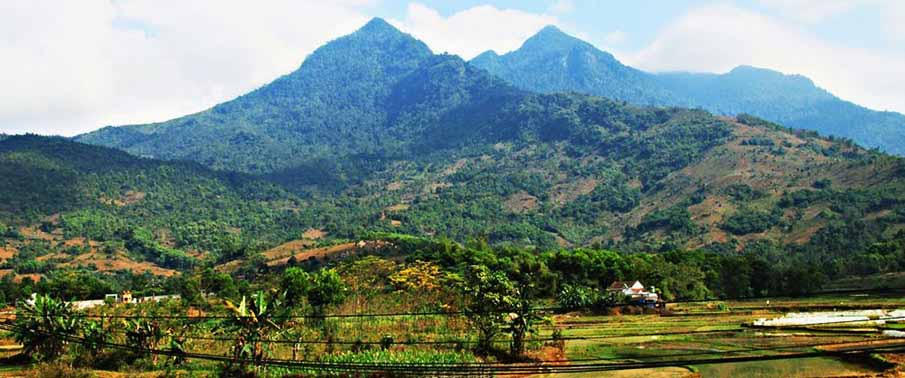
13. Tam Dao National Park
-
- park with good access from Hanoi (80 km north of the city, Vinh Phuc province)
- combines the dense tropical rainforests and tropical forests in Southeast Asia
- the highest peak – Tam Dao North (1592 m above sea level)
- more than 20 other peaks with an altitude above 1000 m
- 70% of the park area is covered with natural and artificial forests
- more than 2 000 species of plants (904 species are considered beneficial to health for humans)
14. Pu Mat Nature Reserve
-
- a perfect place to visit if you’re traveling from Hanoi to southern Vietnam
- one of the most important places to protect the mammals in Vietnam
- high biodiversity and attractive place for eco-tourism, densely forested area
- area of Thai ethnic people, the opportunity of homestay accommodation
- the possibility of boating through the reserve
- nearly 2500 species of plants and 1000 species of animals
- 100 years old and 50 meters tall trees
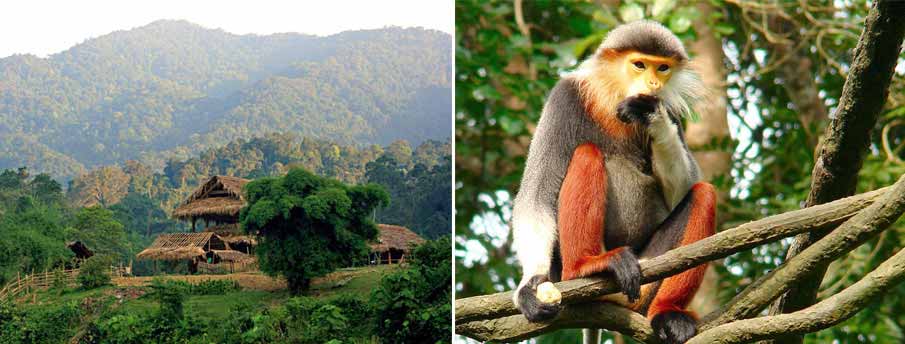
15. Van Long Nature Reserve
-
- Van Long reserve is located only 20 km from the town of Ninh Binh
- excellent one-day trip if you stay longer in Ninh Binh
- a similar area as the Trang An and Tam Coc
- possible boat rides, you can buy tickets on the site
How to travel from Hanoi to Ninh Binh? ➜
Book your hotel / homestay in Ninh Binh ➜
16. Xuan Son National Park
-
- park in the province of Phu Tho, 100 km west of Hanoi
- there are approximately 365 species of animals (gray langur, gibbon, bear, leopard, pheasant …)
- area with many caves, the longest cave is 6 km long
- 84% of the area is covered by forests, the park is rich in fauna and flora
- the possibility of using a homestay (ethnic minority Hmong and Dao)
- a tourist boom this park is still ahead
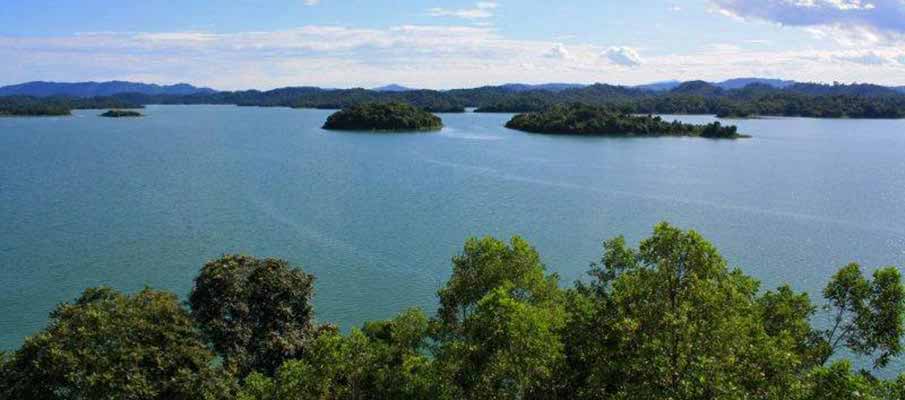
17. Ben En National Park
-
- not so large national park in Thanh Hoa province (40 km from Thanh Hoa city)
- good for the one-day trip if you stay longer in Thanh Hoa or Sam Son
- the large Song Muc Lake
- possible boat rides and kayaking possible
How to go from Hanoi to Thanh Hoa? ➜
Book your hotel / stay in Thanh Hoa ➜
18. Xuan Lien Nature Reserve
-
- the very large nature reserve, about 70 km of Thanh Hoa city
- various species of animals (gray langur, gibbon, pheasant …)
- not so visited area by the foreign tourist
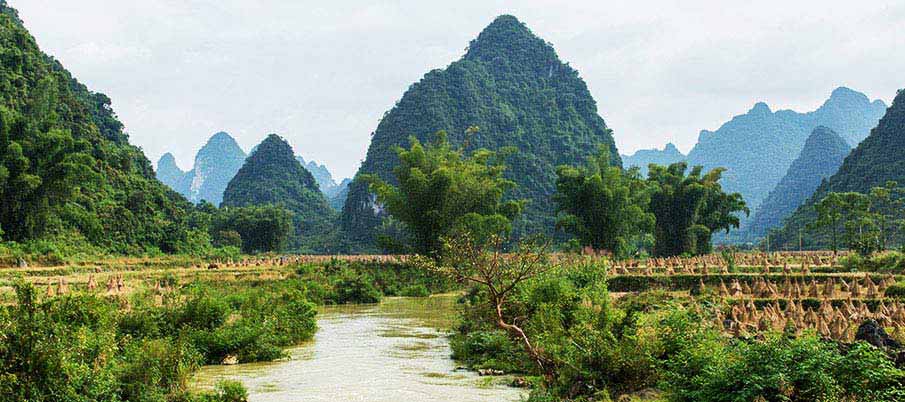
19. Non Nuoc Cao Bang Global Geopark
-
- half of Cao Bang province occupies Non Nuoc Cao Bang Geopark (about 3000 km2)
- in April 2018 became the second geopark in Vietnam written in UNESCO
- 300 km north of the capital of Vietnam – Hanoi
- fossils, sediments, volcanic rocks and karst landscapes
- Ban Gioc Waterfalls, Pac Bo historical Site, Thang Hen Lake…
How to get from Hanoi to Cao Bang? ➜
Book your hotel / homestay in Cao Bang ➜
20. Ta Xua Nature Reserve
-
- a popular place mainly by Vietnamese
- about 230 km from Hanoi, Bac Yen district, Son La province
- mountain ranges, nature, rice terraces, ethnic Hmongs
- popular place: Dinosaur spine (Sống Lưng Khủng Long)
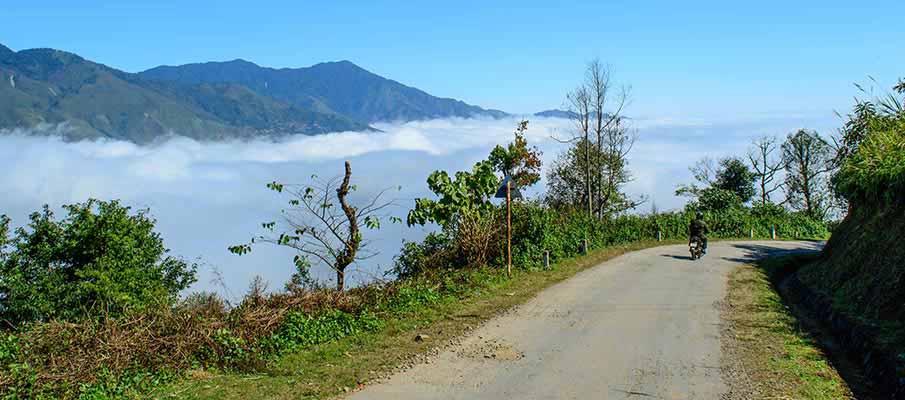
21. Phia Oac – Phia Den National Park
-
- established in May 2018 in Cao Bang province
- covering 10 593 hectares (area at the Tinh Tuc town in Nguyen Binh district)
- about 77%, or more than 8 146 hectares, of the area is natural forest
Map of the national parks in northern Vietnam:
National parks in central and southern Vietnam:
❓ Frequently Asked Questions about Trekking in Vietnam:
1. How to book hike or tour in Vietnam?
2. What are the most popular areas for trekking in the north?
3. How to travel to Sapa from Hanoi?
-
- From Hanoi to Sapa you can get by bus/minivan (travel time is about 6 hours) or you can use sleeper train to Lao Cai city. Read this article: How to reach Sapa from Hanoi?
4. What is the highest mountain of Vietnam?
-
- The highest mountain of Vietnma is Fansipan. The height of the mountain is 3,147.3 metres. You can climb to this mountain on your own with tour guide or you can use Fansipan Cable Car (Fansipan Legend). The cable car is about 2 km from Sapa town, you can travel from Sapa town to the cable car by mountain train.
5. Which mountain pass in the north is the most fascinating?
-
- The most fascinating mountain pass in northern Vietnam is Ma Pi Leng Pass in Ha Giang province. It is about 5 km from Dong Van town and you can travel by motorbike / bicycle via Ma Pi Leng Pass to Meo Vac town.
6. How to explore national parks in Vietnam?
-
- It depends which parks you can visit. If you want to explore the largest parks in the north, it is better to have your own tourist guide. But some small parks you can visit on your own (e.g. Cuc Phuong, Van Long reserve, Ba Be park…)
7. What are some popular trekking destinations in Vietnam?
-
- Some popular trekking destinations in Vietnam include Sapa, Ha Giang, Mai Chau, and the Pu Luong Nature Reserve. These areas offer stunning landscapes, ethnic minority villages, and diverse hiking trails.
8. Do I need a guide for trekking in Vietnam?
-
- While it is not mandatory to have a guide, it is highly recommended, especially for remote or challenging treks. A guide can provide local knowledge, ensure your safety, and enhance your overall trekking experience.
9. What is the best time of year for trekking in Vietnam?
-
- The best time for trekking in Vietnam is during the dry season, which typically runs from November to April. The weather is cooler and more pleasant, and trails are less muddy. However, some regions, like Sapa, can be visited year-round, with each season offering unique scenery.
10. What should I pack for a trekking adventure in Vietnam?
-
- Some essential items to pack for a trekking adventure in Vietnam include sturdy hiking shoes, lightweight and quick-drying clothing, a waterproof jacket, a hat, sunscreen, insect repellent, a refillable water bottle, a small backpack, and a first aid kit. It’s also important to pack appropriate gear for the specific trek and check the weather forecast beforehand.
11. What are the most popular and visited islands in Vietnam?
-
- There are various popular and tourist islands in Vietnam. One of the most popular and visited island is Phu Quoc in southern Vietnam. You can read this article: 10 Best Islands in Vietnam.
BOOK A PRIVATE TOUR in Vietnam ➜
☕ Do you want to support this website? You can do it.
This website is free for all visitors and travelers heading to Vietnam. Here you will find a lot of my information about possible travel around northern Vietnam. You do not pay anything for the content on this website, the content is completely free for all visitors. If you like the website and you are satisfied with the information, you can contribute a small amount ($3) to its further maintenance and updates. You can do it online on BUYMEACOFFEE platform. And I may also buy one coffee or snack. In my opinion $3 for completely free content is nothing.
BUY ME A COFFEE HERE (Thanks!) 😉
| Trekking Area in Northern Vietnam: | What to Expect: | How to Prepare: |
|---|---|---|
| Sapa | Breathtaking landscapes, rice terraces, ethnic minority villages | Comfortable trekking shoes, warm clothing, insect repellent |
| Ha Giang | Dramatic mountain scenery, ethnic minority culture, off-the-beaten-path trails | Sturdy hiking boots, layers of clothing, rain gear, trekking poles |
| Cat Ba Island | Karst landscapes, jungle treks, coastal views | Swimwear, sun protection, refillable water bottle |
| Cuc Phuong National Park | Rich biodiversity, ancient trees, wildlife spotting | Trekking shoes, insect repellent, binoculars, camera |
| Mai Chau Valley | Scenic valley, ethnic minority villages, traditional stilt houses | Lightweight clothing, trekking sandals, sun hat, camera |
| Ma Pi Leng Pass (Dong Van Geopark) | Spectacular mountain pass, winding trails, panoramic views | Sturdy hiking boots, windproof clothing, camera, first aid kit |
| Ba Be National Park | Lakes, waterfalls, limestone cliffs, ethnic villages | Hiking shoes, waterproof backpack, swimwear, camping gear |
| Mu Cang Chai | Terraced rice fields, rolling hills, rural landscapes | Good walking shoes, warm clothing, camera, sunscreen |
| Hoang Lien Son Park | Highest peaks in Indochina, challenging trails, stunning vistas | High-altitude trekking gear, trekking permit, acclimatization |
| Ba Vi National Park | Mountains, dense forests, diverse flora and fauna | Trekking shoes, raincoat, insect repellent, water bottle |
Trekking in Vietnam: Essential Information
| Trekking in Vietnam: Essential Information | Details |
|---|---|
| 1. Best Trekking Seasons: |
Vietnam offers diverse trekking experiences throughout the year. While the dry season (November to April) is ideal for trekking in the northern regions, the rainy season (May to October) brings lush landscapes to the central and southern areas. Consider the climate variations when planning your trekking adventure. |
| 2. Popular Trekking Routes: |
Explore iconic trekking routes such as the Sapa Valley, Fansipan Mountain, and Ha Giang Loop. Each route offers unique landscapes, cultural encounters, and a chance to witness the rich biodiversity of Vietnam’s mountains and forests. |
| 3. Required Permits: |
Certain trekking areas in Vietnam may require permits, especially in protected national parks. Ensure you obtain the necessary permits before embarking on your trek. This helps in preserving the natural environment and ensures a smooth trekking experience. |
| 4. Accommodation Options: |
While trekking in remote areas, accommodation options vary from homestays in local villages to basic mountain lodges. Plan your trekking itinerary and choose accommodations that align with your preferences, providing an authentic experience in the heart of nature. |
| 5. Packing Essentials: |
Pack wisely for your trek, considering the terrain and weather conditions. Essential items include sturdy hiking boots, weather-appropriate clothing, a backpack, water purification tools, and a first aid kit. Be prepared for variable weather conditions during your trek. |
| 6. Cultural Sensitivity: |
Respect local cultures and traditions during your trekking adventure. Engage with communities in a meaningful way, seek permission before taking photographs, and follow any cultural norms you encounter. Trekking in Vietnam is an opportunity for cultural exchange. |
| 7. Guided Trekking Tours: |
Consider joining guided trekking tours led by experienced local guides. They provide valuable insights into the landscapes, flora, and fauna, enhancing your overall trekking experience. Local guides also contribute to the sustainable development of trekking destinations. |
| 8. Safety Precautions: |
Prioritize safety during your trek by following established trails, staying informed about weather forecasts, and notifying someone about your trekking plans. Carry a fully charged phone, emergency contacts, and a map to ensure a safe and enjoyable trekking experience. |
| 9. Wildlife Awareness: |
Vietnam’s natural landscapes are home to diverse wildlife. Respect the local fauna, avoid disturbing wildlife habitats, and adhere to any guidelines provided by park authorities. Trek responsibly to contribute to the conservation of Vietnam’s unique ecosystems. |
| 10. Trekking Memories: |
Capture the essence of your trekking adventure by documenting your experiences. Share stories, photos, and insights with fellow trekkers and travel enthusiasts. Your trekking memories in Vietnam become a lasting legacy, inspiring others to explore the beauty of this captivating destination. |
BOOK TICKETS for Transport in Vietnam ➜
